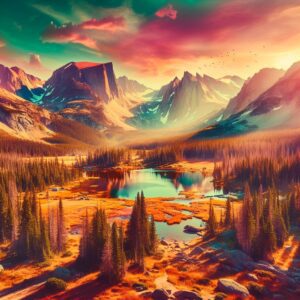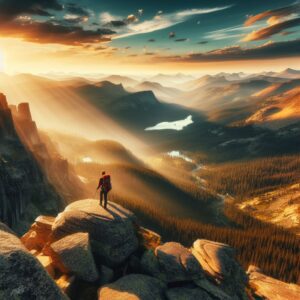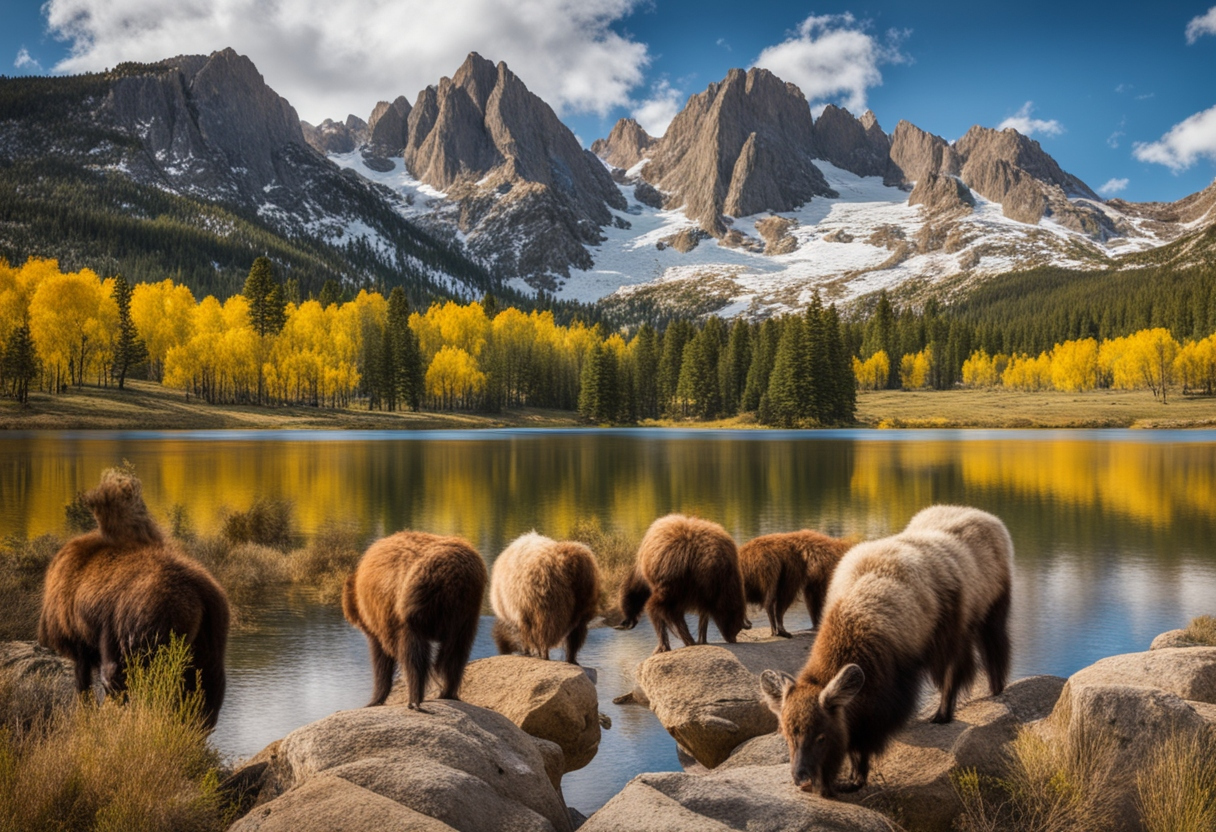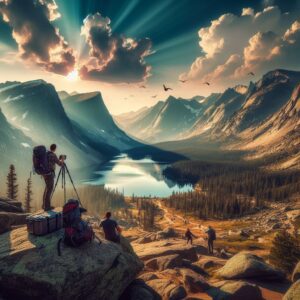Exploring the Wonders of Rocky Mountain National Park: 10 Must-See Attractions in the Heart of the Rockies
Introduction
Welcome to the breathtaking realm of Rocky Mountain National Park, where the air is crisp, the vistas are awe-inspiring, and adventure awaits at every turn. Nestled in the heart of the Rockies, this natural wonderland is a playground for outdoor enthusiasts and nature lovers alike. Picture yourself surrounded by towering peaks, pristine alpine lakes, and meadows adorned with wildflowers. Whether you’re a seasoned hiker, wildlife enthusiast, or simply seeking a rejuvenating escape, Rocky Mountain National Park has something extraordinary to offer.
In this blog, we’re about to embark on a journey together, exploring the hidden gems and must-see wonders that make Rocky Mountain National Park a true gem in the great outdoors. From the iconic Trail Ridge Road to the secluded trails where elk roam freely, we’ll guide you through the enchanting landscapes that define this national treasure. So, lace up your hiking boots, pack your sense of wonder, and join us as we uncover the magic that awaits in Rocky Mountain National Park!
Rocky Mountain National Park Attractions:
Presented below is a table showcasing the top 25 attractions in Yellowstone National Park, spotlighting the unique characteristics that set each location apart and make it noteworthy.
| # | Attraction | What’s Special |
|---|---|---|
| 1 | Trail Ridge Road | Panoramic views along the highest paved road in the US. |
| 2 | Longs Peak | Iconic summit for challenging and rewarding hikes. |
| 3 | Bear Lake | Tranquil alpine lake surrounded by picturesque scenery. |
| 4 | Moraine Park | Wildlife-rich valley with stunning mountain vistas. |
| 5 | Dream Lake | Scenic beauty with mirror-like reflections. |
| 6 | Alberta Falls | Cascading waterfall along a scenic hiking trail. |
| 7 | Hallett Peak | Majestic summit with challenging hiking trails. |
| 8 | Emerald Lake | Crystal-clear lake nestled amid breathtaking peaks. |
| 9 | Mills Lake | Serene lake in a glacier-carved basin. |
| 10 | Glacier Gorge Trailhead | Access point to multiple picturesque hiking trails. |
| 11 | Sprague Lake | Family-friendly spot for picnics and fishing. |
| 12 | The Loch | Beautiful lake surrounded by towering cliffs. |
| 13 | Chasm Lake | Dramatic setting beneath the iconic Longs Peak. |
| 14 | Cub Lake | Tranquil lake with a scenic and easy approach. |
| 15 | Bear Lake Loop Trail | Easy loop showcasing diverse ecosystems. |
| 16 | Wild Basin | Pristine wilderness with cascading waterfalls. |
| 17 | Lumpy Ridge | Renowned for rock climbing and panoramic views. |
| 18 | Twin Sisters Peaks | Twin peaks offering sweeping panoramic vistas. |
| 19 | Lily Lake | Scenic spot with views of the surrounding mountains. |
| 20 | Odessa Gorge | Remote area known for rugged natural beauty. |
| 21 | Sky Pond | Stunning destination with alpine grandeur. |
| 22 | Black Lake | Secluded alpine lake surrounded by towering cliffs. |
| 23 | Mills Glacier | Glacial feature accessible through scenic hikes. |
| 24 | Ypsilon Lake | Remote lake with a peaceful and serene ambiance. |
| 25 | Deer Mountain Trail | Panoramic views of the park and neighboring peaks. |

Location and Access:
Accommodations and Stays:
Entrance, Fees, and Passes:
Weather and Conditions:
The park experiences a range of weather conditions due to its elevation. Summers are generally mild, while winters can be cold and snowy, creating a winter wonderland.
When is the best time to go to Rocky Mountain National Park?
The best time to visit is during the summer months (June to September) for pleasant weather and open trails, although winter offers a unique charm for snow enthusiasts.
Is Rocky Mountain National Park open?

Activities and Things to Do:
Can you camp in Rocky Mountain National Park?
Yes, camping is available in designated campgrounds within the park. Reservations are recommended, especially during peak seasons.
General Information:
- Rocky Mountain National Park offers a wealth of activities beyond hiking and camping. Visitors can indulge in wildlife viewing, embark on scenic drives, and capture the park’s breathtaking landscapes through photography. The park’s rich biodiversity, including elk, mule deer, bighorn sheep, moose, and various bird species, provides ample opportunities for wildlife enthusiasts.
- For those seeking reviews and information about Rocky Mountain National Park, a variety of sources can be explored. Travel websites, official park service pages, and online forums are excellent platforms where visitors share their experiences, insights, and tips. These reviews contribute to a well-rounded understanding of what the park has to offer.
- To enhance the visitor experience, the Rocky Mountain National Park visitor center is strategically located at the Beaver Meadows Entrance. Here, guests can access valuable information, explore engaging exhibits, and participate in ranger programs. It serves as a hub for learning about the park’s natural and cultural history.
- For those unable to visit in person, webcams positioned in key locations within Rocky Mountain National Park provide a real-time glimpse of the park’s beauty. These webcams offer live views of the landscapes, wildlife, and changing weather conditions, allowing virtual exploration and connection with the park’s dynamic environment.
Rocky Mountain National Park Map:
Best Rocky Mountain National Park Hikes:
Rocky Mountain National Park Photos:
Bear Lake:
Tickets:
Cabins:

Fun Facts Unveiling the Wonders of Rocky Mountain National Park:
- Wildlife Wonderland: Rocky Mountain National Park is a haven for diverse wildlife, including over 280 bird species, 60 mammal species, and iconic inhabitants like elk, bighorn sheep, and moose. The park’s varied ecosystems provide a thriving habitat for these fascinating creatures.
- High-Elevation Playground: Home to 72 named peaks over 12,000 feet, Rocky Mountain National Park boasts some of the highest elevations in the continental United States. Longs Peak, towering at 14,259 feet, stands as the park’s highest point and a challenge for avid hikers.
- Alpine Wildflower Extravaganza: During the summer months, the park transforms into a vibrant tapestry of colors as alpine wildflowers bloom in abundance. Meadows and slopes come alive with a stunning array of lupines, columbines, and other native blooms, creating a picturesque landscape.
- Trail Ridge Road: Rocky Mountain National Park is home to the highest continuous paved road in the United States – Trail Ridge Road. This scenic drive takes visitors above the tree line, offering breathtaking views of the Rockies and a chance to spot wildlife like marmots and pikas.
- Glacial Remnants: Evidence of the park’s glacial past is found in its U-shaped valleys and cirques, carved by ancient glaciers. One notable remnant is the stunning Emerald Lake, nestled in a glacial basin surrounded by towering peaks.
- The Big Thompson River: The Big Thompson River, flowing through the park, is a vital lifeline for the ecosystem. Named after David Thompson, a Canadian fur trader, this waterway not only sustains the park’s flora and fauna but also offers picturesque scenes for visitors.
- Rocky Mountain Night Sky: Designated as an International Dark Sky Park, Rocky Mountain National Park provides exceptional opportunities for stargazing. With minimal light pollution, visitors can marvel at the Milky Way and countless stars, creating a magical celestial experience.
- Historic Homesteads: The park holds remnants of early 20th-century homesteads, offering a glimpse into the lives of pioneers who settled in the challenging mountain environment. The Holzwarth Historic Site and other locations showcase the resilience and resourcefulness of these early inhabitants.
- Frozen Beauty: Winter in the park transforms the landscape into a snowy wonderland. While some trails are accessible for winter sports enthusiasts, the serene beauty of snow-covered peaks and frozen lakes provides a different, yet equally enchanting, experience.
- Mummy Range: The Mummy Range, part of the Front Range of the Rockies, features unique rock formations that resemble the profile of a sleeping mummy. This distinctive geological feature adds a touch of mystery to the park’s already captivating scenery.

